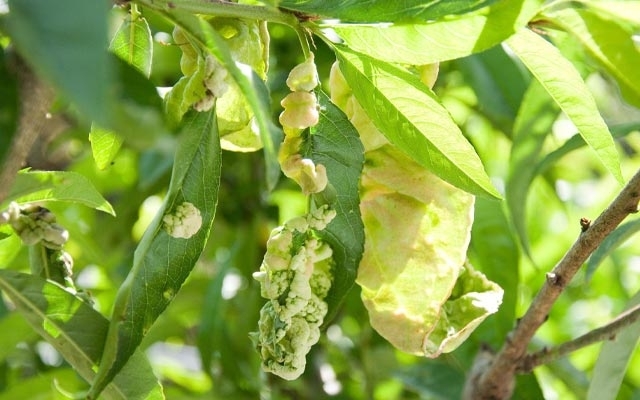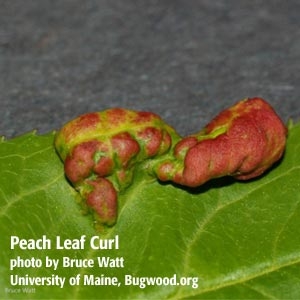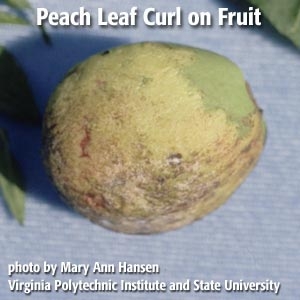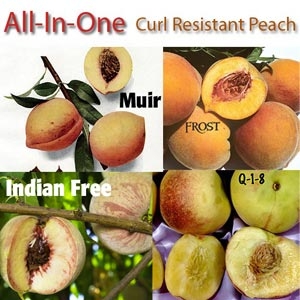To all the lovely people,
Here is good article from Peaceful Valley on a problem most of us have who grow peaches and nectarines.
Notice that they use UC as a reference.
Paul
Peach Leaf Curl Control
May 12, 2015 - Suzanne at Peaceful Valley
|
|
|
|
|
|
Peach Leaf Curl, Photo by Yuan-Min Shen, Bugwood.org |
|
|
|
|
Peach leaf curl, also known as curly leaf, curly blight or leaf blister, has been recognized as a common disease since the early 1800s. It is caused by the fungus Taphrina deformans and can affect the blossoms, fruit, leaves and shoots of peaches and nectarines. Peach leaf curl is the most common disease found in backyard orchards. Cool (48-68F) wet weather when leaves are first opening favors the disease.
Life Cycle of the Fungus
Symptoms appear after leaves emerge and begin to grow. The fungus causes cells in the infected portions of the leaves to grow abnormally large, causing the distorted look to the leaves. The fungus eventually produces reproductive bodies called asci that contain the spores. You will see a velvety-like appearance to the leaves, this is caused from the spores or ascospores. They are released into the air and infect other parts of the tree or other trees. In the newly infected areas the fungus continues to multiply and “cover” the tree and remain dormant in the bark and around the buds. The following spring the fungus is moved by rain or irrigation and infects new leaves. And the cycle continues. If not treated, the infection can weaken the tree and cause a decline in fruit production.
Treatment
Chemical controls
Copper - products available to the home orchardist are those with lower Metallic Copper Equivalent (MCE) of about 8%, such as Liqui-Cop. Effectiveness can be improved with a sticker such as Horticultural Oils. Follow the instructions for all products and make sure you use appropriate safety equipment during application. Apply fungicide to point of runoff and a good rule of thumb is to apply three times during the dormant season: after leaf drop, winter (around Jan.1) and before bud swell (around Feb, depending on where you live). You can apply less often if the infection the previous year was light.
Lime Sulfur - effective for controlling peach leaf curl but not registered for sale for the backyard orchard and not available for sale in many states.
Cultural Controls
Once the tree is infected there is not much to be done to get rid of the disease that season. But it is very important to maintain the vigor of the tree throughout the active growing season.
- Thin the fruit to reduce the demand on the trees' resources. For peaches and nectarine, thin fruit to at least 3 inches apart. Remove diseased or cracked fruit and place in the trash, not your compost pile.
- Fertilize with nitrogen by mid-June, a good balanced fruit tree fertilizer like the Dr. Earth Fruit Tree Fertilizer (7-4-2) is a good choice.
- Keep watered to reduce water stress.
- Clean up dropped leaves or fruit around the base of the tree to reduce spreading to other trees. Don't put these in the compost pile, the spores can remain dormant for some time.
Another option, especially you have to remove a weakened tree, consider putting in resistant or partially resistant varieties such as Frost, Indian Free, Muir, or Q-1-8 peaches. If you don't care for these varieties, choose a tree that blooms later in the season. You may see less disease developing in these due to the later bloom time.
Don't let peach leaf curl ruin your favorite peach or nectarine. Yearly spraying with a fungicide listed for peach leaf curl will keep the disease in check and allow for a healthy tree and a bountiful harvest.
Resources
UC IPM - Peach Leaf Curl
Peach Leaf Curl - Cornell University



